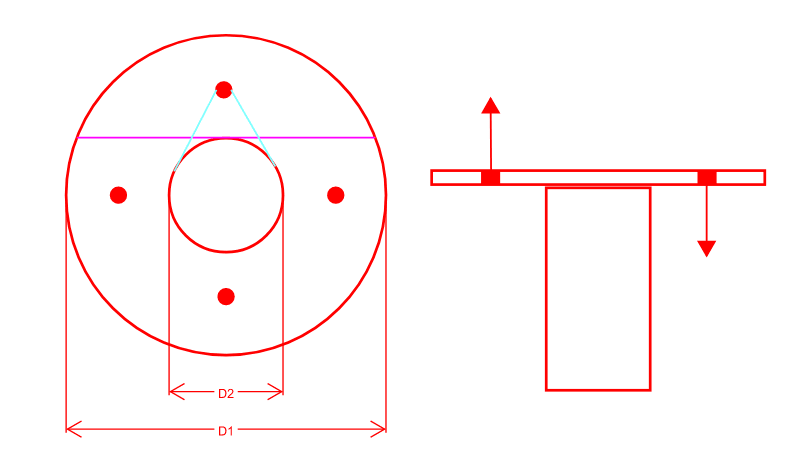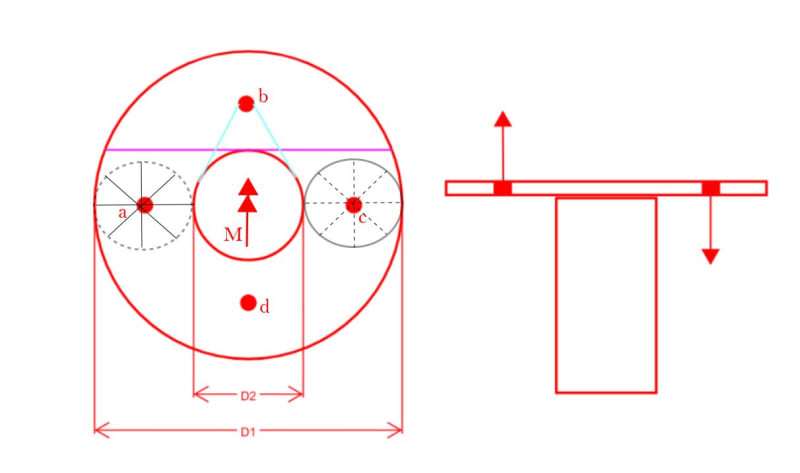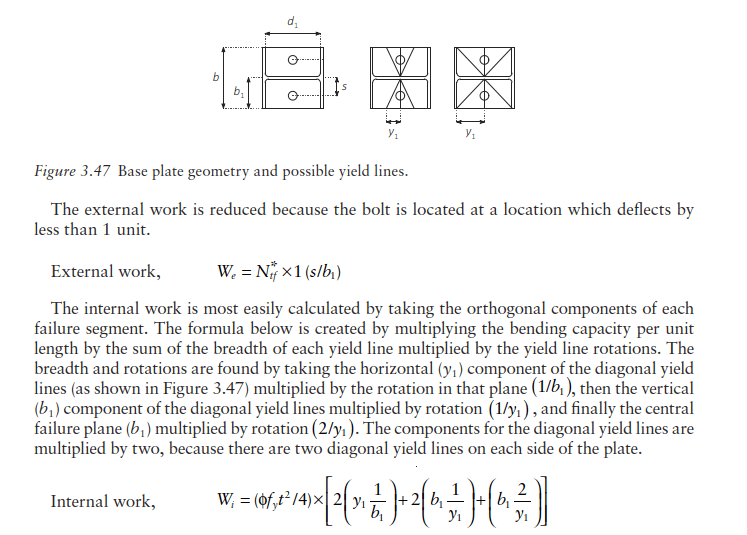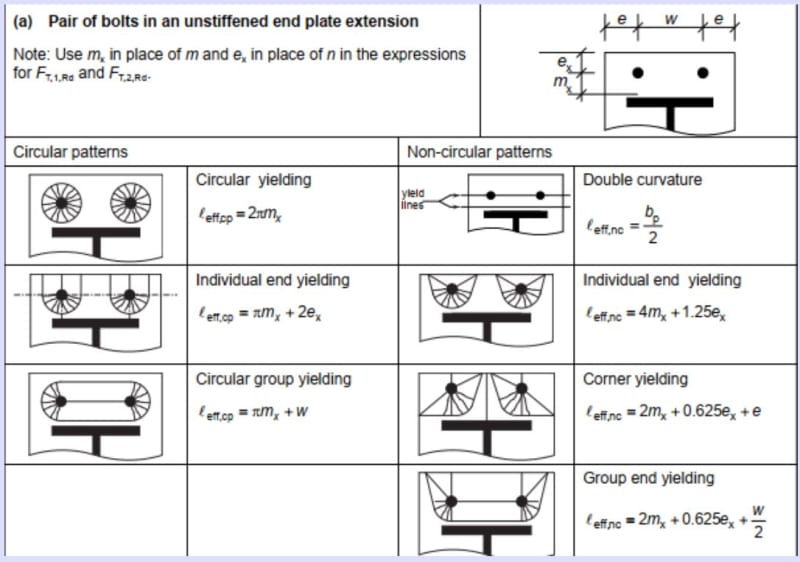I have a circule plate that supports a piece of a equipment typically on a CHS (sometimes a SHS)and I'm trying to understand my "effective length" that I can assume when checking the plate in bending. I'm not really 100% sure on Yield Line Analysis and I'm trying to have a better understanding on how it works. I have attached an image of what I'm talking about. Is it the purple line? The Cyan Line? Or am I completely wrong?





